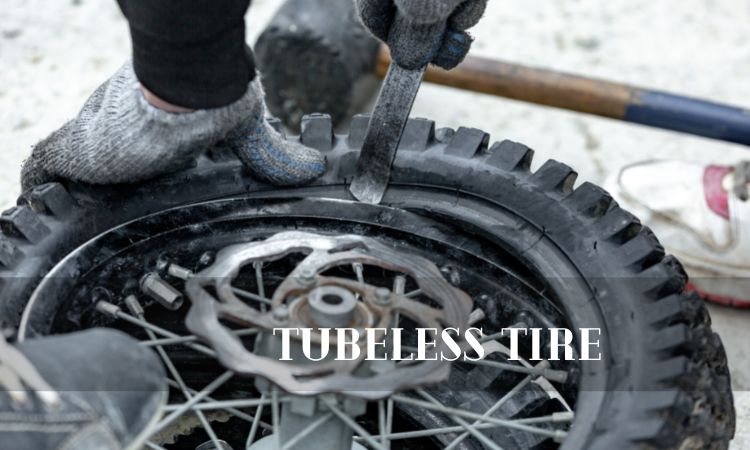Recognizing Tire Tread Wear Indicators
In the world of automotive safety, recognizing tire tread wear indicators is essential for maintaining optimal performance and minimizing risk on the road. Like the compass that guides a ship, these indicators serve as a crucial navigational tool for drivers, providing valuable insight into the condition of their tires.
By understanding the various signs of wear, such as tread depth measurements, uneven wear patterns, and indications of over or underinflation, drivers can make informed decisions to ensure their tires are in top-notch shape.
Key Takeaways
- Regularly inspecting tire tread is essential for road safety and optimal vehicle performance.
- Understanding tread depth measurements using indicators or a gauge helps identify the need for tire replacement.
- Uneven tire wear, such as wear on one side, cupping or scalloping of the tread pattern, and feathering, can indicate improper vehicle alignment.
- Preventing tire tread wear involves regular tire rotations, proper inflation, tire balancing, and maintaining recommended tire pressure.
Importance of Regularly Inspecting Tire Tread
Regularly inspecting the tire tread is of utmost importance as it allows drivers to identify any potential wear or damage, ensuring road safety and optimal performance of their vehicles.
Tire tread is the part of the tire that comes into direct contact with the road surface. It plays a critical role in providing traction, stability, and control while driving.
Neglecting tire tread inspection can have severe consequences.
One of the main reasons why regular maintenance of tire tread is crucial is because it directly impacts the vehicle's ability to grip the road. As the tread wears down over time, it becomes shallower, resulting in less traction. This can lead to decreased control and handling, especially on wet or slippery surfaces. Inadequate grip increases the risk of accidents, particularly during sudden maneuvers or emergency stops.
Furthermore, neglecting tire tread inspection can also impact the overall performance and efficiency of the vehicle. Worn-out tread can cause uneven wear on the tires, leading to imbalanced handling and increased fuel consumption. It can also put additional stress on the suspension and steering components, potentially resulting in costly repairs.
Regularly inspecting the tire tread allows drivers to identify signs of wear, such as uneven tread wear, cracks, bulges, or foreign objects embedded in the tire. By promptly addressing these issues through tire rotation, replacement, or repair, drivers can ensure their safety on the road and maximize the lifespan of their tires.
Understanding Tread Depth Measurements
A tread depth measurement of at least 4/32 inches, along with proper tire rotation, can significantly enhance the traction and safety of a vehicle on various road surfaces. It is crucial for drivers to understand the importance of regularly measuring tread depth to ensure optimal performance and maximize tire lifespan.
Here are three key points to consider when it comes to measuring tread depth:
- Tread Wear Indicators: Tires are designed with built-in tread wear indicators, also known as wear bars or tread wear bars. These indicators are small rubber bars that run horizontally across the tire's tread. When the tread wears down to the level of these indicators, it is a clear sign that the tire needs to be replaced.
- Measuring Tread Depth: There are several methods to measure tread depth accurately. The most common one is using a tread depth gauge, a tool specifically designed for this purpose. Another method is using a penny. Insert the penny into the tread groove with Lincoln's head facing downward. If the top of Lincoln's head is visible, it means the tread depth is below the recommended level.
- Importance of Adequate Tread Depth: Adequate tread depth is essential for maintaining good traction, especially in wet or snowy conditions. It helps to channel water away from the tire's contact patch, preventing hydroplaning and improving overall grip. Insufficient tread depth can compromise the vehicle's handling and braking performance, increasing the risk of accidents.
Signs of Uneven Tire Wear
Uneven tire wear can manifest in various ways and serve as an indicator of potential issues with a vehicle's suspension or wheel alignment. Signs of uneven tire wear include:
- Excessive wear on one side of the tire
- Cupping or scalloping of the tread pattern
- Feathering or uneven tread wear across the tire surface
Identifying and addressing these signs promptly can prevent further damage to the tires and extend their overall lifespan.
Causes of Uneven Wear
The primary factor contributing to tire wear irregularities is improper vehicle alignment. When a vehicle's wheels are not properly aligned, it can result in uneven tire wear, which can lead to decreased performance and safety concerns.
There are several causes of tire misalignment, including:
- Impact of road conditions: Potholes, bumps, and rough roads can cause the wheels to become misaligned. These road conditions can put stress on the suspension system and cause the wheels to shift out of alignment.
- Incorrect installation: Improper installation of tires or suspension components can lead to misalignment. It is important to ensure that all components are installed correctly and according to the manufacturer's specifications.
- Wear and tear: Over time, the various components of a vehicle's suspension system can wear down, leading to misalignment. Regular maintenance and inspections can help detect and address these issues before they cause uneven tire wear.
Proper alignment is crucial for maintaining tire performance and ensuring a safe driving experience. Regular inspections and addressing any alignment issues promptly can help prevent uneven tire wear and extend tire life.
Preventing Tire Tread Wear
To prevent tire tread wear, regular tire rotations and proper inflation are essential.
Tire rotation benefits include promoting even tread wear, extending tire life, and enhancing overall vehicle performance. By regularly moving the tires from one position to another, tire rotation ensures that the wear patterns are distributed evenly across all four tires. This helps to maintain optimal traction and handling, especially during cornering and braking.
Additionally, tire rotation allows for a more balanced and smooth ride, reducing vibrations and noise.
Another crucial factor in preventing tire tread wear is choosing the right tire pressure. Underinflated tires can lead to increased tread wear on the outer edges, while overinflated tires can cause excessive wear in the center. Maintaining the recommended tire pressure is crucial for maximizing tire lifespan and ensuring safe driving conditions.
Identifying Tread Balding Patterns
Identifying tread balding patterns is crucial for maintaining tire performance and safety.
Common signs of tread balding include center wear, shoulder wear, and feathering.
Common Tread Balding Signs
Several common tread balding signs can help determine the extent of wear on tires and indicate the need for replacement. It is crucial to be aware of these signs to ensure the safety and performance of your vehicle. Here are three key indicators to look out for:
- Uneven wear: Check for uneven tread wear across the tire surface. This can indicate problems with alignment, suspension, or improper inflation.
- Tread depth: Measure the depth of the tread using a tread depth gauge. When the tread depth reaches 2/32 of an inch, it is time to replace the tire.
- Excessive cracking: Inspect the sidewalls for cracks, bulges, or cuts. These can weaken the tire structure and increase the risk of blowouts.
To prevent tread balding, it is essential to practice regular tire tread maintenance. This includes routine inspections, proper tire inflation, regular rotation, and alignment checks. By following these steps, you can ensure your tires remain in optimal condition and maximize their lifespan.
Preventing Tire Tread Wear
Regular maintenance and proper tire inflation are key factors in preventing tire tread wear and extending the lifespan of your tires. By following a few simple tire maintenance tips, you can ensure that your tires stay in optimal condition for longer. One important aspect of tire maintenance is regular tire rotation. This involves moving the tires from one position to another on the vehicle to ensure even tread wear. The benefits of tire rotation are numerous, including prolonging the life of your tires, improving traction and handling, and maximizing fuel efficiency.
To help you understand the importance of tire rotation, here is a table outlining the recommended rotation patterns for different types of vehicles:
| Vehicle Type | Rotation Pattern |
|---|---|
| Front-Wheel Drive | Front to Rear |
| Rear-Wheel Drive | Rear to Front |
| All-Wheel Drive | Cross Pattern |
Recognizing the Signs of Overinflation
An accurate assessment of tire pressure can be made by closely observing the specific indicators that suggest excessive inflation levels. Proper tire inflation is crucial for maintaining optimal performance, safety, and fuel efficiency.
Overinflated tires can have severe consequences, including reduced traction, poor handling, increased risk of a blowout, and decreased tire lifespan.
Increased tire wear: Overinflated tires have a smaller contact patch with the road, leading to uneven wear across the tread. This can result in reduced tire performance and the need for premature replacement.
Reduced braking effectiveness: Overinflated tires have less contact with the road surface, which can compromise their ability to grip the road during braking. This can significantly increase stopping distances and decrease overall safety.
Uncomfortable ride: Excessive tire pressure can cause a harsher ride, as the tires transmit more vibrations and impacts from the road to the vehicle's occupants. This can lead to discomfort and fatigue during long drives.
To determine if your tires are overinflated, look for signs such as excessive tire bulging, a hard ride quality, and abnormal wear patterns. Regularly checking and adjusting tire pressure to the manufacturer's recommended levels is essential for maintaining proper tire inflation and ensuring optimal performance, safety, and longevity.
Indications of Underinflated Tires
Notably, underinflated tires can lead to decreased fuel efficiency and compromised handling. Tire pressure maintenance is crucial for optimal vehicle performance and safety. Underinflation occurs when the tire pressure is below the recommended level specified by the vehicle manufacturer. This can have several consequences on the overall performance of the tires and the vehicle.
One of the primary consequences of underinflation is decreased fuel efficiency. When tires are underinflated, they create more rolling resistance, which requires the engine to work harder to propel the vehicle forward. This extra effort results in increased fuel consumption and decreased mileage. In fact, studies have shown that underinflated tires can decrease fuel efficiency by up to 3%.
Another consequence of underinflated tires is compromised handling. When tires do not have the proper amount of air pressure, they cannot maintain their shape and contact with the road surface. This leads to decreased traction and stability, especially during cornering and braking. The vehicle becomes more prone to skidding and loss of control, which can be dangerous in various driving conditions.
Spotting the Warning Signs of Tire Cupping
How can drivers identify the warning signs of tire cupping and take appropriate action to prevent further damage? Tire cupping, also known as scalloping or feathering, is a common issue that affects the tread of tires, causing uneven wear patterns. It is important for drivers to be able to recognize the signs of tire cupping in order to address the problem promptly and prevent further damage.
Here are some key indicators to look out for:
- Uneven wear: Check the tread of your tires regularly for any uneven wear patterns. Cupping typically appears as low spots or dips on the surface of the tread.
- Noise: Pay attention to the sounds your tires make while driving. Tire cupping can cause a rumbling or thumping noise, especially at higher speeds.
- Vibration: If you feel a vibration in the steering wheel or through the vehicle's body, it may be a sign of tire cupping. This vibration is often more noticeable at higher speeds.
To prevent further damage and extend the life of your tires, it is important to address tire cupping promptly. Regular tire maintenance, including proper inflation, rotation, and alignment, can help prevent cupping. Additionally, avoiding excessive braking and maintaining smooth driving habits can also contribute to tire cupping prevention.
If you notice any signs of cupping, it is recommended to have your tires inspected and possibly replaced by a professional.
How to Check for Sidewall Damage
Inspecting tires for any signs of sidewall damage is crucial for ensuring their overall safety and longevity. The sidewall of a tire is responsible for providing structural support and maintaining proper inflation. Any damage to the sidewall can compromise the tire's ability to perform optimally and may lead to tire failure. Therefore, it is important to regularly check for cracking and identify bulges to prevent potential hazards on the road.
When checking for cracking, it is essential to thoroughly inspect the entire sidewall of the tire. Look for any visible cracks or splits in the rubber. These can occur due to age, exposure to extreme temperatures, or improper maintenance. Cracking is a clear indication that the tire's integrity has been compromised, and immediate action should be taken.
In addition to cracking, it is equally important to identify bulges on the sidewall. Bulges are usually caused by internal damage, such as a broken belt or ply separation. These bulges are visible as abnormal protrusions on the sidewall and can be felt by running your hand over the tire's surface. If a bulge is detected, it is crucial to replace the tire as soon as possible to avoid potential blowouts or tread separation.
Regularly inspecting tires for sidewall damage, including checking for cracking and identifying bulges, is essential for maintaining safe and reliable performance. By addressing any signs of sidewall damage promptly, drivers can ensure the longevity of their tires and mitigate the risk of accidents on the road.
Frequently Asked Questions
What Are the Consequences of Not Regularly Inspecting Tire Tread?
Not regularly inspecting tire tread can have significant consequences. These include potential tire failures, which can lead to accidents and loss of control. Additionally, it can negatively impact vehicle handling and performance, compromising safety and efficiency.
How Do I Measure the Tread Depth of My Tires?
To measure the tread depth of your tires, use a tread depth gauge or the "penny test." Insert the gauge into the groove or place a penny with Lincoln's head facing down. If the tread does not reach Lincoln's head, it's time for new tires.
What Are the Causes of Uneven Tire Wear?
Uneven tire wear can occur due to various causes, such as misalignment, improper inflation, suspension issues, and aggressive driving. Regular tire maintenance, including regular inspections, proper inflation, and rotation, can help prevent uneven wear and extend tire life.
How Can I Identify Different Patterns of Tread Balding?
To identify different patterns of tread balding, it is important to understand tire balding and its causes. By inspecting the tire's tread depth, wear bars, and any irregular wear patterns, one can accurately identify and diagnose the type of tread balding present.
What Are the Dangers of Overinflated Tires?
Overinflated tires pose significant risks and dangers to drivers. These include reduced traction, decreased braking performance, increased risk of blowouts, and uneven tire wear. It is crucial to maintain proper tire pressure for safe and efficient driving.
Conclusion
In conclusion, regularly inspecting tire tread is crucial for maintaining optimal safety and performance.
By understanding tread depth measurements and recognizing signs of uneven wear, balding patterns, overinflation, underinflation, tire cupping, and sidewall damage, drivers can identify potential issues and take appropriate action.
While some may argue that inspecting tires is time-consuming and unnecessary, the potential consequences of neglecting tire maintenance far outweigh the minimal effort required.
Ensuring proper tire tread can significantly improve vehicle handling and reduce the risk of accidents.







